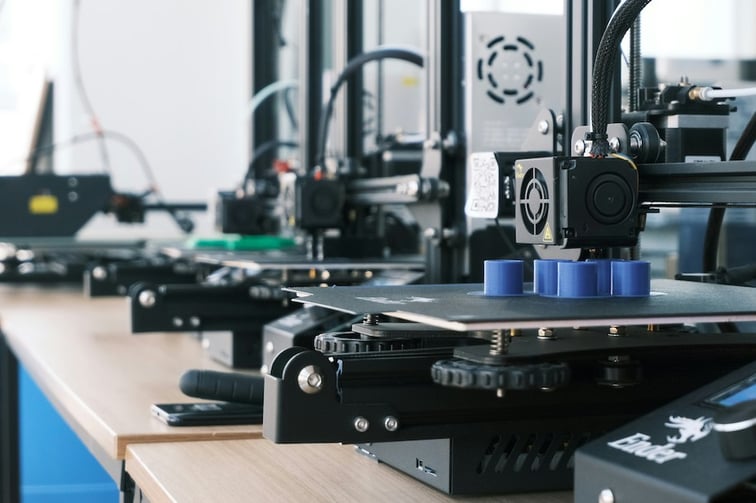When it comes to manufacturing plastic parts, two popular methods often come up: injection molding and 3D printing. Both techniques have unique advantages and are widely used in the manufacturing industry. Whether you are looking for cost-effective mass production or intricate custom designs, understanding the differences between injection molding and 3D printing is important. In this post, we’ll discuss the benefits of each method to help you make an informed decision based on your specific project needs.
Injection Molding
Injection molding is a common method for mass producing parts. It involves injecting molten plastic into a mold and cooling it to form the final product. This method is known for its accuracy and ability to handle large volumes. However, creating a mold can be more costly and time-consuming. For more details on the costs involved in injection molding, read our post on how much a mold will cost.
Benefits of Injection Molding:
- Variety of Materials: Offers a wide range of materials for your product.
- Cost-Effectiveness for Large Quantities: Ideal for producing high volumes at a lower cost.
- Consistent Quality: Ensures uniformity in mass production.
- Reduced Manufacturing Time: Speeds up the overall production process.
3D Printing
3D printing, or additive manufacturing, builds objects layer by layer from a digital model. It offers great flexibility in design and is faster for prototyping compared to injection molding. However, for large-scale production, it may not be as cost-effective as injection molding.
Benefits of 3D Printing:
- Flexibility in Design: Allows for complex and detailed designs.
- Quick Prototyping: Speeds up the design and testing process.
- Customization: Perfect for personalized and unique designs.
- Lower Initial Costs: No need for mold creation, reducing upfront expenses.

3D Printing vs Injection Molding: What’s the Best Method for Your Project?
The choice between injection molding and 3D printing depends on various factors. So it’s important to keep these questions in mind before you decide.
How large is your batch size?
If you need to produce a high volume of parts, injection molding is likely the better choice. Injection molding offers superior efficiency, cost-effectiveness, and scalability for large-scale production.
What is your turnaround time?
If you prioritize rapid prototyping, then 3D printing may be the ideal solution. 3D printing provides design flexibility and quick prototyping capabilities.
Are material strength and surface finishes important to you?
If you require tight tolerances or need a wide range of material options, injection molding may be the right option for your project. Injection-molded parts feature a seamlessly poured single layer, ensuring a uniform and smooth surface finish. This smooth texture reduces friction when interacting with other objects, in contrast to the rougher finish of 3D printed parts.
Does your product have an unusual shape?
Certain shapes pose challenges for injection molding and may require extra tooling, which could increase costs. 3D printing is better suited for more intricate designs that feature spaces, gaps, and more complex structures.
It's worth noting that while 3D printing is gaining popularity, injection molding remains the preferred method for mass manufacturing. The ability to produce parts without needing an expensive mold is a significant advantage of 3D printing. However, injection molding offers superior efficiency, cost-effectiveness, and consistency for large-scale production.
Both injection molding and 3D printing have unique strengths and applications. To make an informed decision, it is important to understand their differences and consider your specific project requirements. If you need assistance making the best decision for your business, please contact us.

